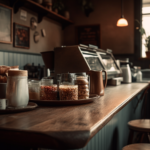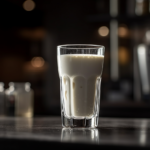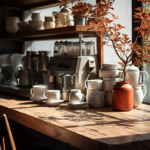Table of Contents
Exploring the Varied World of Tea: An In-Depth Look at Different Types for Perfect Home Brewing
Hey there tea enthusiasts! If you’re like me and enjoy a steaming cup of tea to start your day or unwind in the evening, then this detailed guide is just for you. We’re going to dive headfirst into the wonderful world of tea, exploring the various types that are perfect for home brewing.
Tea is not just a simple beverage; it’s a sensory experience that can uplift, calm, or energize, depending on the type you choose. From the classic black tea to the delicate green teas and the herbal delights, there’s a tea out there for every taste and mood.
In this guide, we’ll take a closer look at the different types of tea and their unique characteristics. We’ll discuss the boldness of black tea, its robust flavors and deep, enticing colors. Then we’ll venture into the realm of green tea, with its fresh, grassy notes and myriad health benefits. Don’t worry; we won’t forget about the earthy and soothing herbal teas, perfect for a cozy night in or a quick pick-me-up.
Not only will we explore the types of tea, but we’ll also delve into the best brewing methods for each. Whether you’re a traditional teapot lover or prefer the simplicity of tea bags, we’ve got you covered.
So, grab your favorite mug, get ready to brew, and let’s embark on an exciting journey into the world of tea!
Exploring Black Tea for a Bold and Flavorful Brew
Black tea is a classic favorite among tea enthusiasts, known for its bold flavors and rich, dark colors. Diving into the world of black tea can open up a whole new realm of possibilities for your home brewing adventures. Here’s what you need to know:
1. Assam Tea: Hailing from the Assam region of India, Assam tea is famous for its robust and malty flavor. It brews into a full-bodied cup, perfect for those who enjoy a strong and invigorating brew in the morning.
2. Darjeeling Tea: Often referred to as the “champagne of teas”, Darjeeling tea is grown in the picturesque Darjeeling region of India. It offers a delicate and floral flavor profile, with notes of muscat grapes and a slightly astringent finish.
3. Earl Grey Tea: A beloved classic, Earl Grey tea is infused with the essence of bergamot oil. Its distinct citrusy aroma and flavor make it a popular choice for afternoon tea sessions. Whether you enjoy it plain or with a dash of milk, Earl Grey tea is sure to satisfy your taste buds.
4. English Breakfast Tea: As the name suggests, this tea blend is an essential part of a traditional English breakfast. With a bold and robust flavor, English Breakfast tea is perfect for starting your day on a strong and refreshing note.
5. Masala Chai: Originating from India, Masala Chai is a flavorful blend of black tea, aromatic spices, and often milk. This spiced tea offers a warm and comforting experience, with its unique combination of cinnamon, cardamom, cloves, ginger, and black pepper.
Each type of black tea has its own distinct character, allowing you to experiment and find your personal favorite. So, get your kettle boiling and enjoy the bold, flavorsome journey that black tea has to offer in the comfort of your own home brewing adventures.
Unveiling the Delicate Delights of Green Tea
Green tea, with its refreshing taste and numerous health benefits, has gained popularity worldwide. If you’re looking to embrace a more delicate and nuanced tea experience, green tea is the way to go. Here’s what you need to know:
1. Sencha: One of the most common types of green tea, Sencha originates from Japan. It has a grassy, vegetal flavor with a mildly sweet aftertaste. Sencha is perfect for those who enjoy a light and refreshing cup of tea.
2. Matcha: Known for its vibrant green color and powdered form, Matcha is a finely ground green tea that is traditionally whisked into hot water. It offers a rich and creamy texture with a slightly bitter taste. Matcha is popular not only for drinking but also for incorporating into desserts and lattes.
3. Dragon Well (Longjing): A renowned Chinese green tea, Dragon Well is distinguished by its flat, broad leaves and a mellow, chestnut-like flavor. It provides a smooth, lingering taste and is often enjoyed without any additives to fully appreciate its natural character.
4. Gunpowder: With tightly rolled leaves resembling gunpowder pellets, this Chinese green tea delivers a smoky and slightly earthy flavor. It’s ideal for those seeking a stronger and bolder cup of tea.
5. Jasmine Green Tea: Combining the floral aroma of jasmine blossoms with green tea leaves, Jasmine Green Tea offers a fragrant and soothing brewing experience. It has a delicate and balanced flavor profile with sweet floral notes.
Green tea may require a bit of finesse while brewing to bring out its best flavors. Be mindful of water temperature and steeping times to avoid any bitterness. So, grab your favorite green tea variety, take a sip, and allow the delicate delights to transport you to a state of tranquility.
Herbal Infusions: Aromatic and Soothing Cups of Goodness
When it comes to herbal teas, the possibilities are endless. These caffeine-free concoctions are made from a variety of plants, herbs, spices, and flowers, offering a range of flavorful and soothing options. Here’s a breakdown of some popular herbal infusions:
1. Chamomile: Chamomile tea is well-known for its calming properties. Made from the dried flowers of the chamomile plant, this herbal infusion boasts a gentle and floral taste, perfect for unwinding at the end of a long day.
2. Peppermint: Refreshing and invigorating, peppermint tea is made from the leaves of the peppermint plant. It offers a cool and minty flavor with a refreshing aroma, making it an excellent choice for digestion and relaxation.
3. Rooibos: Originally from South Africa, Rooibos tea is a caffeine-free herbal infusion with a sweet and nutty taste. It has a vibrant reddish-brown color and is packed with antioxidants, making it a popular choice for overall well-being.
4. Hibiscus: With its vibrant red color and tart flavor, hibiscus tea is both visually appealing and refreshing. It is made from the dried petals of the hibiscus flower and can be enjoyed hot or cold. Hibiscus tea is not only delicious but also known for its potential health benefits.
5. Ginger: Spicy and warming, ginger tea is a popular choice for its invigorating flavor and potential digestive benefits. Made from the root of the ginger plant, this herbal infusion offers a zesty and soothing experience.
Herbal infusions are versatile and can be mixed and matched to create unique flavor combinations. Whether you prefer a calming cup of chamomile or an invigorating ginger concoction, the world of herbal teas is sure to please both your taste buds and your senses.
So, gather your favorite herbs, steep them in hot water, and savor the aromatic and soothing cups of goodness that herbal infusions have to offer right in the comfort of your home.
Perfecting the Brewing Process for Each Type of Tea
Brewing tea is an art that requires a delicate balance of time, temperature, and technique to bring out the best flavors. Here are some tips to help you perfect the brewing process for each type of tea:
1. Black Tea:
- Water Temperature: Boiling water (100°C/212°F).
- Steeping Time: 3-5 minutes.
- Tip: Adjust the steeping time based on your preference for a stronger or milder cup.
2. Green Tea:
- Water Temperature: Cooled slightly after boiling (70-80°C/158-176°F).
- Steeping Time: 2-3 minutes.
- Tip: Avoid using boiling water, as it can make the tea bitter. Experiment with shorter steeping times for a milder flavor.
3. Herbal Infusions:
- Water Temperature: Boiling water (100°C/212°F).
- Steeping Time: Varies based on the herb or flower. Generally, 5-8 minutes.
- Tip: Feel free to steep herbal infusions longer to maximize flavor extraction.
4. Considerations for All Teas:
- Quality Water: Use fresh and filtered water to enhance the taste and avoid any impurities.
- Proper Measurements: Use the recommended amount of tea leaves or tea bags for consistent results.
- Preheating the Teapot: Warm up the teapot by rinsing it with hot water before brewing to maintain the temperature of the tea.
- Experimentation: Don’t be afraid to adjust the brewing parameters to suit your personal taste preferences.
Remember, these guidelines are general and can be adjusted according to your taste and the specific tea you’re brewing. Don’t hesitate to explore and adapt to find the perfect brewing method for each type of tea.
Now that you’re armed with these brewing basics, go ahead, grab your favorite tea leaves, and embark on an exciting journey of discovering your ideal cuppa right at home!
Conclusion
In conclusion, we have explored the wonderful world of tea and how to brew a perfect cup at home. From the bold flavors of black tea to the delicate delights of green tea and the soothing goodness of herbal infusions, there is a tea for everyone.
By understanding the characteristics of each type, such as the robustness of black tea, the freshness of green tea, and the diverse flavors of herbal infusions, we can tailor our brewing methods to bring out the best in each cup. Remember to pay attention to water temperatures, steeping times, and experiment to find your preferred strength and flavor.
Whether you start your day with a strong black tea, enjoy a refreshing green tea in the afternoon, or unwind with a calming herbal infusion in the evening, the world of tea offers endless possibilities for taste, aroma, and relaxation.
So, embrace the art of tea brewing, indulge in the diverse flavors, and let the comforting warmth of a well-brewed cup of tea uplift and soothe your senses. Happy brewing, tea lovers!









